To the Somme – June-July 1916
28th Week at War – 10th June – 16th June La Gorgue – Busnes – Auchel -Villers Chatel
On the 10th June, the 38th (Welsh) Division received orders to proceed south and over the 11th and 12th June, their positions in the Neuve Chapelle sector were taken over by the 61st Division. This marked the end of the Division being part of XI Corps. The initial phase of this move to the south was to take the Division to an area just east of St Pol (Saint Pol sur Ternoise) to be trained on a manoeuvre area lent by the French. The 130th (St John) Field Ambulance paraded at 1.30pm on Saturday 10th June and marched at the rear of the 114th Brigade (to pick up stragglers and the sick) via Merville, Calonne and Robecq to Busnes, arriving at 8.30pm where they were billeted on the Busnes-Robecq road. 48563 Pte Ieuan Phillips states in his diary that after the 14 mile march he “slept in a motor car like a top”. A small rear party was left at La Gorgue to hand over to the 2/1 South Midland Field Ambulance from the 61 Division.
The rear party left at La Gorgue and Laventie arrived in Busnes on the 11th and wagons were loaded and reloaded for instructional purposes, but the Unit was still busy treating the sick of the 114th Brigade. On the following day, an advance party under the command of Lieut R A G Elliott left for Auchel at 7am and the rest of the Unit paraded and marched via Lillers and Burbure to Auchel, arriving at 2.30pm. The march was very wet and miserable. The OC recorded in the Unit War Diary that there were “very poor billets for Officers and men and bad standing for the horses”. While Capt M Ffoulkes described the billets at Busnes as “most uncomfortable but as we only remained one night, it did not matter much”, and those at Auchel as being “much more fortunate in the matter of billets”. Later that day the OC visited Villers-Chatel.
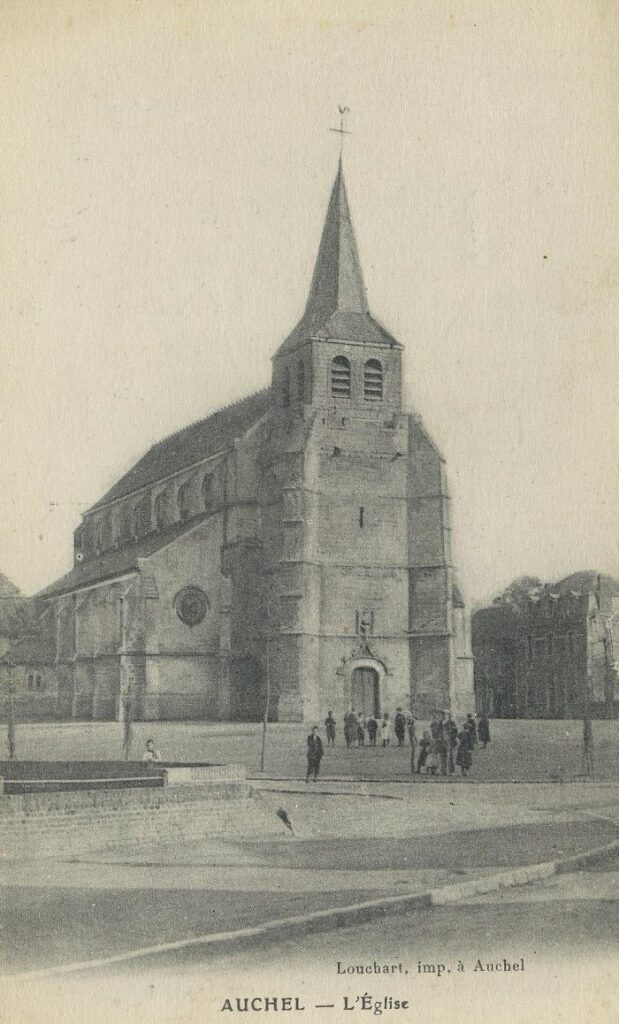
On Tuesday 13th June, an advance party under the command of the OC left for Villers-Chatel at 7.15am and relieved the 76th Field Ambulance of the 25th Division at 1pm. There were 12 ordinary and 18 extraordinary beds for Officers and 40 ordinary and 56 extraordinary beds for other ranks at Chateau Villers-Chatel and 156 ordinary beds for other ranks at Mingoval. Lt Col Davies described these two locations as ‘excellently situated spots for a Field Ambulance, both the former containing ample accommodation for sick officers with a beautifully laid out park, while the huts at Mingoval were spacious and of a French pattern. The billets for the Unit were in an untidy and dirty state, those at Mingoval were unfit for occupation and verminous and no certificate re. billets was asked for or given’
By the time 48563 Pte Ieuan Phillips arrived at Chateau Villers Chatel he records in his diary as being “fagged out completely”. On the 15th June, the 38th (Welsh) division became part of XVII Corps (3rd Army) and began training for the offensive ahead. The divisional training programme which had been issued by GHQ some weeks earlier stipulated that divisions were not only to train to attack enemy trenches and strong points on a large scale, but also to train to follow through once the enemy defences had been breached. The men of the 130th (St John) Field Ambulance were not only to take part in these training exercises but had to continue to treat the sick and injured of the 114th Brigade.
29th Week at War – 17th June – 23rd June Villers Chatel – Mingoval
The hospital at Villers Chatel was situated in one wing of the Chateau. The Chateau was first used as a hospital by the French Army in 1914 and is famous for being the place that General Ernest Jacques Barbot, the commander of the French 77th Alpine division, died from shrapnel wounds to his chest that he suffered during the 2nd battle of Artois on the 10th May 1915. General Barbot was initially buried in a small military cemetery in the ground of the Chateau Villers Chatel but was subsequently reinterred at the French Military Cemetery of Notre Dame de Lorette.
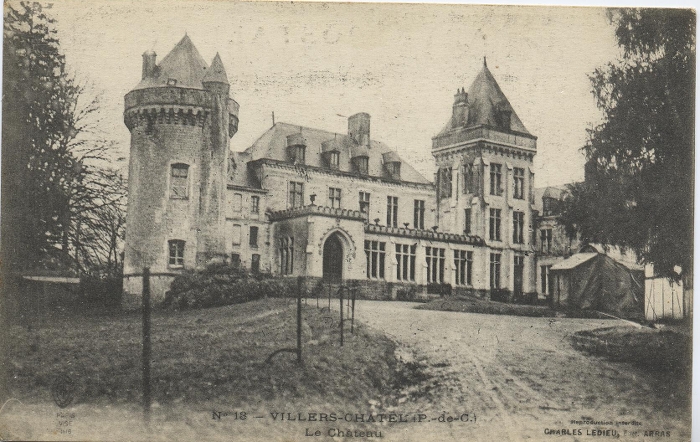
The owner of the Chateau, Madame La Comtesse de Florimond and two of her four daughters were still in residence in one wing of the Chateau while the Unit used the rest as a hospital. Capt M Ffoulkes, in a letter home dated 17th June 1916, wrote that “The Countess has an Irish lady – an old maid named Miss O’Donnell from Kerry, living with her. She acts as a sort of companion and has been with her about 15 years. I had a long chat with her this morning – she took me to see a cemetery for the French soldiers in the Park. The land was given by the Countess and the graves are beautifully kept. I came across some German soldiers buried there”. The fact that this cemetery was well kept and contained the graves of French as well as German soldiers was also recorded by 48563 Pte Ieuan Phillips.
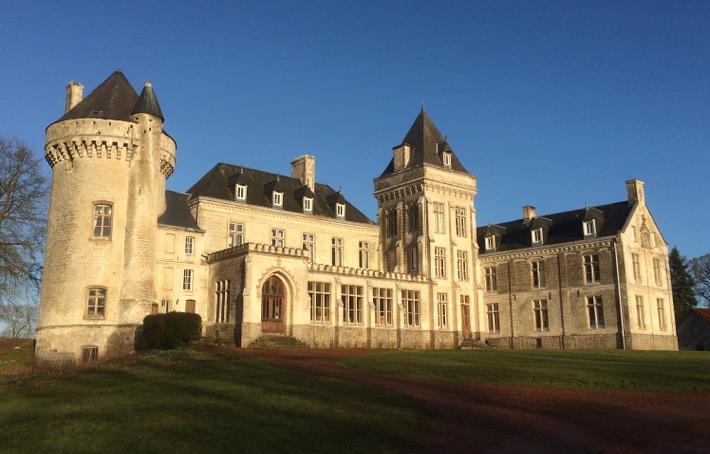
The Chateau is currently owned by the Great Grandson of the Countess, who was in residence when the Unit occupied it as a Hospital in June 1916 and lets out two of the bedrooms on a bed and breakfast basis. I stayed there in March 2015 and was most comfortably looked after and while the owner does not have any photographs of the Chateau during the Great War (these were lost during the Nazi occupation in WW2), he was able to show me around the various rooms that were used as wards and operating theatres. Capt Ffoulkes describes the Chateau in a letter home “Our present abode is a most romantic place and we are very comfortable. It is an old chateau – a small castle in fact – situated on the side of a gentle hill in a beautiful old park”. He goes on to say “It has turrets, winding staircases and beautiful oak paneled rooms. My bedroom is in one of the turrets and I have a luxurious old fashioned bed”. I suspect that this may well have been the room I stayed in!
While stationed at Villers Chatel and Mingoval, the Unit’s chief work consisted of field training with the Division. On Saturday 17th, the Unit was engaged with drill, physical exercise and fatigues, although 48563 Pte Ieuan Phillips recorded that on this day he was kept busy with a great number of sick men to be seen.
On the following day, the hospital at Chateau Villers Chatel was visited and inspected by Brig General T. O. Marden C.B., C.M.G., D.S.O., commanding officer of the 114th Brigade and a route march with stretchers was conducted under the command of Capt Ffoulkes.
On the 19th, the A.D.M.S. 38th (Welsh) Division visited the Hospital at Villers Chatel and conducted a medical board to examine men of the 10th, 13th, 14th and 15th Battalions of the Welsh Regiment who were considered unfit for forward duties (PB – permanently base) and the hospital was also visited by General Sir Charles Fergusson, Commander of XVII Corps.
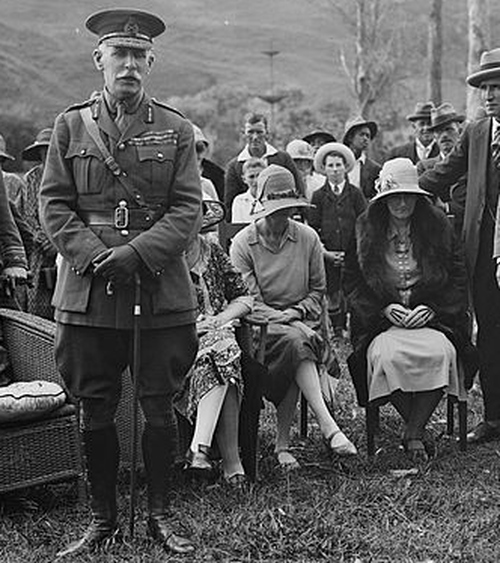
A route march with stretchers was again undertaken with Capt Anderson and Capt Ffoulkes in command, while Lieut R A G Elliott proceeded on leave. A further route march was held on the next day but while 48563 Pte Ieuan Phillips records that he had no route march on the 21st, the Unit War Diary records that there was a Unit route march with stretchers and also practice in loading and unloading stretchers, carrying wounded over difficult country and through woods. Lt Col Davies also carried out an examination of the stretcher bearers in first aid. Between 9am and 5pm, four medical officers along with a Sgt Maj R.A.M.C. and a Sgt Maj A.S.C. carried out a reconnaissance of the divisional training area.
30th Week at War – 24th June – 30th June Villers Chatel – Ransart – St Hilaire
On Saturday 24th, as the Unit took part in the 114th Brigade manoeuvres, the Battle of the Somme began with the commencement of the greatest bombardment the British Army had ever carried out. With 427 heavy guns, there was one heavy artillery piece per 58.5 yards of frontage. For the 38th (Welsh) Division, Divisional manoeuvres were conducted, the Unit’s A.D.S. was located at Monchy-Breton under the command of Capt Anderson. During the afternoon, the A.D.S. was moved forward to Rocort. Six officers and 145 other ranks of the Unit bivouacked out for the night.
On the following day, Divisional manoeuvres were carried out. On this occasion, the A.D.S. at Monchy-Breton was under the command of Capt Ffoulkes, while the main dressing station at Ostreville was under the command of Capt Anderson. Lt Col Davies visited the A.D.S. and the M.D.S. and then joined the Brigade Headquarters for the rest of the manoeuvres.
The three stretcher bearer sub divisions of the Unit under Capt A Jones, Lieut F A Anderson and Lieut Burke took part in the exercise along with two of the three tent sub divisions. The third tent sub division remained at Viller-Chatel/Mingoval to care for the sick and injured there.
The Unit war diary records that the A.D.S. was opened at 9am and closed at 3.30pm while the M.D.S was opened at 9am and closed at 1.30pm. Subsidiary advanced dressing stations were formed during the day as an advance of the whole line took place.
The Unit worked over very heavy and hilly ground carrying a large number of dummy ‘wounded’ on stretchers and wheeled stretchers and as the collecting ground was exposed (for the purpose of the exercise) to enemy fire, motor ambulances were only able to proceed a mile in front of the A.D.S. At the end of the manoeuvres, the men of the Unit marched the 10 miles back to Villers-Chatel arriving at 9pm with no men falling out.
On Monday 26th June, a foot inspection of the men of the Unit was carried out and fatigues were performed in preparation to closing both the hospitals at Chateau Villers-Chatel and at Mingoval and arrangements were made to evacuate all the cases remaining in the hospitals. Chateau Villers-Chatel was handed over to the 60th Division who were going to use it as their Divisional H.Q.
Having completed their training in the St Pol area, the 38th (Welsh) Division was now to start their final move to the Somme. An infantry division of some 18,000 men with their motor and horse drawn transport, artillery etc has a very large ‘footprint’ and took up a great deal of road when on the march. A field ambulance unit alone would occupy approximately 450 yards of road when on the march so it is easy to imagine the logistical nightmare that the Army H.Q. faced playing a very complex game of chess, moving new divisions into the correct location to exploit any breakthrough or even to replace battle worn divisions in the line while evacuating bloodied divisions away from the battle area and all the while, keeping the army supplied with food, water and ammunition.
At 5pm, the Unit paraded and marched with the 114th Brigade the 26 miles to Ransart, arriving at 4am! A billeting party had been sent ahead and on arrival, the men were accommodated in barns. The 197 men belonging to units of the 114th Brigade who were unable to march were transferred by motor vehicles and lorries to Ransart.
On the 27th, Lieut Elliott reported from leave. 48563 Pte Ieuan Phillips records as sleeping until 10.30 am after the Units long night march but there was little time for rest and at 6pm, the Unit paraded and marched with the 114th Brigade to St Hilaire arriving at 3.15am! Once again, a billeting party had been sent on in advance and again the men were accommodated in barns. Once more, the Unit was responsible for transferring the men who were unable to march but because of the scatted nature of the Brigades billets in the Ransart area, only 110 of 228 were transferred during the night of the 27th/28th June.
At 8am on the 28th, the 38th (Welsh) Division came under the command of II Corps and at 11am, Lt Col Davies reported to Brig. General T O Marden C.B., C.M.G., D.S.O., the G.O.C. of the 114th Brigade that there were still men of the brigade that required collecting from the Ransart area, but he was instructed to cease further transferring pending application for lorries.
A bathing parade and a further foot inspection was carried out and preparations were made during the day to march again in the evening but in the mid afternoon, orders were received to ‘stand fast’ and at 11.45pm further orders were received by the Unit to continue to collect the men left behind in the Ransart area. Cars (ambulances) were immediately dispatched to collect 8 men of the 10th Welsh at Neuvillette, 50 of the 14th Welsh at Bouquemaison and 60 of the 15th Welsh at Barley but it was discovered that these men had moved and no information could be obtained as to their whereabouts.
Thursday the 29th must have been a pleasant rest for the men of the Unit, with a parade being held at 9.30am followed by physical drill (exercise) for an hour and then yet another foot inspection. Lieut D C M Page reported from leave and only 4 other ranks were admitted sick. 48563 Pte Ieuan Phillips records that the vehicle he was in, transferring the sick, had a breakdown and he had to walk for assistance, the vehicle being towed to Fienvillers at 4.30am. He had to wait until 11.30am for the vehicle to be repaired before returning to St Hilaire. He had dinner and then set out again for Beauval at 2.30pm, returning at 7.15pm to finally lay down in a barn for a rest as he was tired out. He was up again at 5.30am the next day and was out again on the 30th collecting and evacuating the sick of the Brigade again.
At 9am on the 30th, Lt Col Davies inspected the rifles of the A.S.C. men attached to the Unit (the only men in the Unit who carried weapons) and at 9.30am carried out an inspection of the entire Unit and their iron rations, gas helmets and goggles. This was followed at 10am by Capt Ffoulkes instructing the Unit on the method of wearing their gas helmets in front line trenches. At 5pm, the Unit had another night march from St Hilaire to Val de Maison, arriving at 3.15am. Another long night march at the end of a full day!
31st Week at War – 1st July – 7th July St Hilaire – Val De Maison – Puchevillers – Franvillers – Heilly – Morlancourt
The 1st July saw the start of the infantry assault on the Somme and the Unit spent the day at Val De Maison, opening a hospital for the sick of the 114th Brigade and also a Divisional Hospital to treat scabies cases. However, an order was received at around noon for the Unit to be prepared to move at six hours notice and at 6.15pm a further order was received to march east with the 114th Brigade at 7pm. The Unit quickly packed up and, within 45 minutes, all the wagons were packed, the canvas struck and hospital cases evacuated with the exception of the scabies cases who marched with the Unit. A billeting party was sent to the Brigade HQ and received orders to proceed to the billeting area at Puchevillers. The Unit was stood to from 7pm until 10pm, when the order to march was received. On arrival at Puchevillers, the Unit relieved the 129th Field Ambulance, took over their billets and also 26 patients left there.
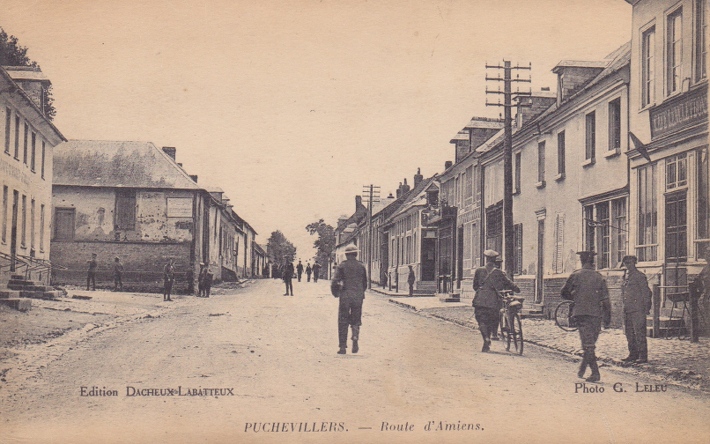
48563 Pte Ieuan Phillips reported sleeping on a chair in a kitchen and waking at 3.30am as there was too much excitement to sleep. Wounded men were arriving at the CCS in their hundreds, British as well as Germans. The sick of the 38th (Welsh) division were being cleared to a Rest Station in readiness to go into action at any moment.
At 12.20pm on 2nd July, the OC of 3 Casualty Clearing Station, Lt Col Ray RAMC (T) called on the Unit requesting assistance, as a large number of casualties were being admitted into his hospital situated near the railway head at Puchevillers. Col Davies, along with five of the Medical Officers and Fifty men of the Unit, proceeded to No. 3 CCS to help. There they found a large number of wounded men, many with machine gun wounds of the limbs. No 3 CCS had dealt with approximately 1400 cases including about 15 German wounded in the 24 hours 1st – 2nd July. The Medical Officer and Men of the Unit assisting No.3 CCS were relieved by others from the Unit on the evening of the 2nd July while the Unit itself dealt with 3 sick officers and 66 other ranks.
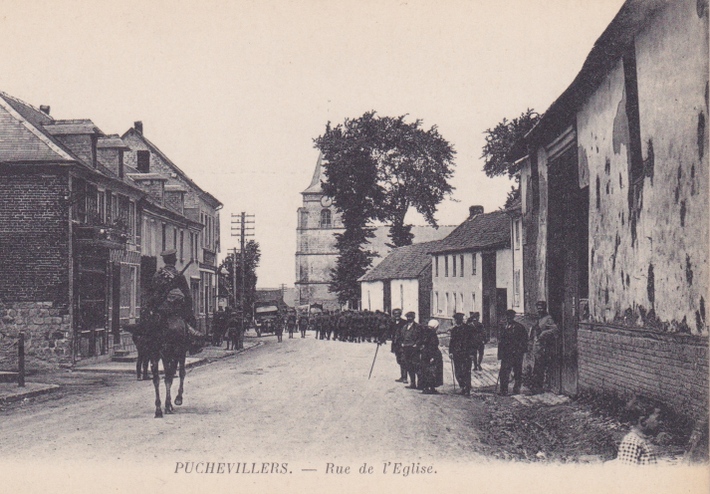
A further 5 Medical Officers and 55 other ranks from the Unit reported at midday on the 3rd July to the OC No. 3 CCS with the offer from Col Davies that they be used to assist, as a large number of casualties were still waiting in convoys of ambulances for admission. After the wounded men had been inspected by the Medical Officers of the Unit, they were given food and drink by the orderlies of the Unit. At 4pm the Unit received orders to move to Franvillers with the 114th Brigade that evening and they marched out of Puchevillers at 7.55pm and arrived at their new location at 1.05 on the 4th July, a delay being caused by a large column of artillery passing through Franvillers. The Unit War Diary records that 037001 Driver Walter Alderson ASC from Caerphilly, attached to the Unit, required evacuation to the CCS.
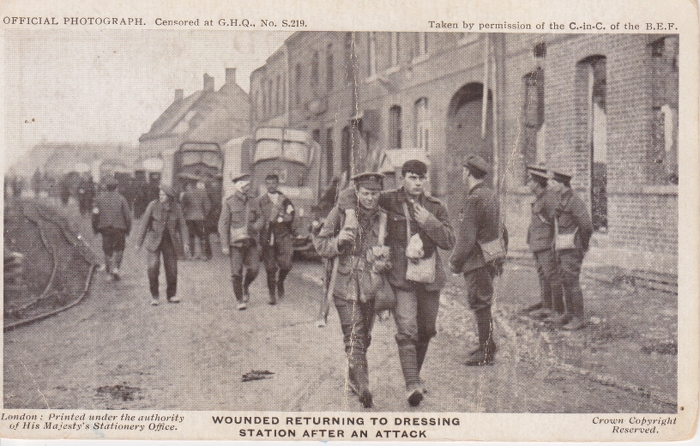
At Franvillers, the Unit was billeted in scattered barns and lofts and received orders to be prepared to move from 10.00am onwards. At 4.00pm, orders were received to send a billeting party to Heilly and Lieut Buckley was detailed for this duty. The Unit finally moved off at about 9pm and marched with the 114th Brigade behind the 14th Welsh, arriving at Heilly at 10.30pm where they were accommodated in a marshy wood in canvas huts. On the evening of the 4th, the Unit received orders from the A.D.M.S that it was to close as a hospital, the final preparation for the Battle ahead.
